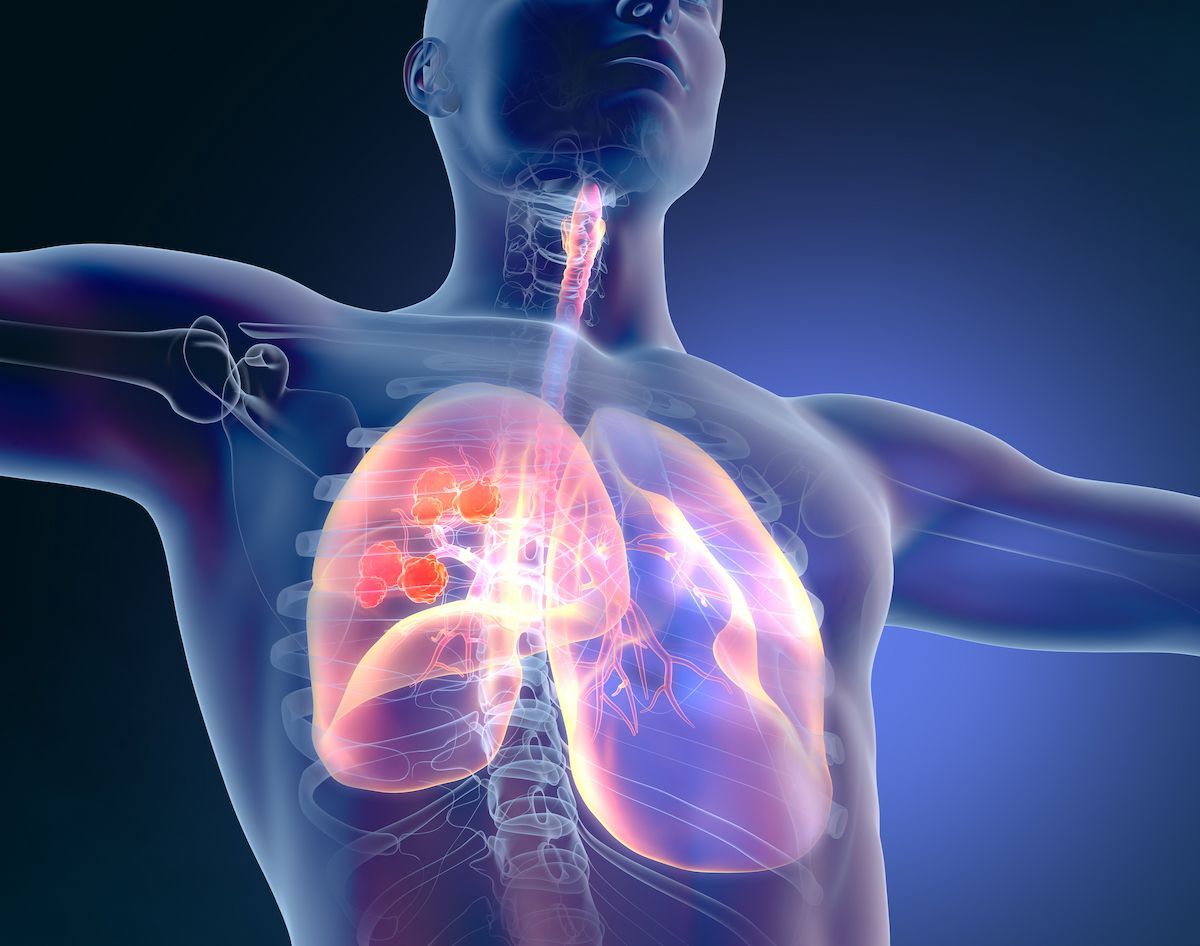Adagrasib Shows Enduring Activity in KRAS G12C+ Non–Small Cell Lung Cancer
Treatment with adagrasib appears to be particularly well tolerated in patients with KRAS G12C–mutated non–small cell lung cancer who receive it for more than 1 year.
"Adagrasib demonstrated durable clinical benefit [and] there were no new safety signals," according to Shirish M. Gadgeel, MD, division head for Hematology/Oncology and the associate director of patient experience and clinical care at the Henry Ford Cancer Institute in Detroit, Michigan.

Patients with KRAS G12C-mutated locally advanced or metastatic non–small cell lung cancer (NSCLC) experienced enduring efficacy when treated with adagrasib (Krazati), according to findings from the dose-expansion and dose-escalation portions of the phase 1/2 KRYSTAL-1 trial (NCT03785249) presented at the 2023 World Conference on Lung Cancer (WCLC).1
Findings presented by Shirish M. Gadgeel, MD demonstrated that after a median follow-up of 26.9 months patients (n = 132) achieved a median overall survival (OS) of 14.1 months (95% CI, 9.2-18.7) with a 1-year OS rate of 52.8% and 2-year rate of 31.3%. The median progression-free survival (PFS), evaluable among 128 patients, was 6.9 months (95% CI, 5.4-8.7) and patients experienced a 1-year PFS rate of 35.0% and 2-year rate of 13.9%. The disease control rate was 80% and 43% of patients experienced an objective response (n = 55 of 128) with a median duration of response (DOR) of 12.4 months (95% CI, 7.0-15.1).1
“Adagrasib demonstrated durable clinical benefit [and] there were no new safety signals,” said Gadgeel, who is the division head for Hematology/Oncology and the associate director of patient experience and clinical care at the Henry Ford Cancer Institute in Detroit, Michigan. “The drug appeared to be well tolerated particularly in patients who received the drug for more than 1 year.”
Adagrasib previously received accelerated approval on December 12, 2022, based on findings from the cohort A of the phase 2 portion of KRYSTAL-1, in which patients with KRAS G12C–mutated locally advanced or metastatic NSCLC achieved an objective response rate (ORR)of 43% (95% CI, 34%-53%).2,3
In the multicenter, single-arm, open-label study, patients enrolled were aged at least 18 years with an ECOG performance status of up to 1 and those with treated, stable central nervous system (CNS) metastases were included. Investigators selected adagrasib as the treatment of choice because of its long half-life of 23 hours and other favorable properties such as dose-dependent pharmacokinetics and CNS penetration. The covalent inhibitor was given orally at 600 mg twice daily in the phase 2 portion of the study. ORR served as the primary end point with DOR, PFS, 1-year survival rate, OS, and safety comprising secondary end points. Clinical activity in patients with CNS metastases and comutations was an exploratory end point.1
Baseline characteristics were consistent with those previously reported; patients in the efficacy population were a median age of 64 years (range, 25-89) and most patients were female (55%) and White (83%). Most patients had an ECOG performance score of 1 (83%), metastatic disease (89%), adenocarcinoma (97%), and had received both prior platinum and anti PD-1/PD-L1 therapy (98%). The median number of prior systemic therapies received was 2 (range, 1-7) with 1 (43%), 2 (35%), 3 (10%) or at least 4 (12%) lines given.3
Subgroup analysis of comutations at baseline revealed that patients with TP53 (n = 42), CDKN2A (n = 12) STK11 (n = 44), and KEAP1 (n = 25) mutations experienced a median OS of 18.7 months (95% CI, 11.3-27.0), 13.0 months (95% CI, 1.6-20.8), 9.2 months (95% CI, 5.0-12.7), and 5.7 months (95% CI, 3.6-9.2), respectively. The median PFS was 8.7 months (95% CI, 5.0-12.1) for those with TP53 mutations, 8.4 months (95% CI, 1.2-11.9) for those with CDKN2A mutations, 4.2 months (95% CI, 3.9-6.1) for those with STK11 mutations, and 4.1 months (95% CI, 2.7-5.6) for those with KEAP1 mutations.
Patients with CNS metastases at baseline (n = 26) achieved a median OS of 14.7 months (95% CI, 7.5-19.3) and had a median PFS of 6.9 months (95% CI, 4.1-11.9).
“Dose modification, defined as any dose interruption or any dose reduction, did not appear to impact efficacy with adagrasib,” Gadgeel said. Among responders, dose modifications occurred for all patients who had a duration of treatment of more than 1 year (60%; n = 33) and all who had a duration of treatment more than 2 years (22%; n = 12). The 1-year OS was 53.3% for all patients with a dose modification and the 2-year OS was 32.1%.
Of patients who received adagrasib for at least 1 year (n = 43), 67% experienced a new onset of a treatment-related adverse event (TRAE) following 1 year of treatment. New onset of TRAEs of grade 2 or higher included 1 patient experiencing a grade 2 diarrhea; no patients had grade 2 or higher hepatotoxicity after 1 year.
“Importantly, even with the long-term follow-up, none of the 12 patients who started the drug within 30 days of immunotherapy [experienced] grade 3 or greater hepatotoxicity and only 1 discontinued the drug due to grade 3 hepatotoxicity,” Gadgeel said.
The confirmatory phase 3 KRYSTAL-12 (NCT04685135) is underway evaluating adagrasib vs docetaxel in patients with previously treated KRAS G12C–mutated NSCLC and is enrolling patients in North America, Europe, Asia, and Australia.
References
- Gadgeel SM, Jänne PA, Spira AI, et al. KRYSTAL-1: two-year follow-up of adagrasib (MRTX849) monotherapy in patients with advanced/metastatic KRASG12C-mutated NSCLC.Presented at: International Association for the Study of Lung Cancer 2023 World Conference on Lung Cancer; September 9-12, 2023; Singapore.
- FDA grants accelerated approval to adagrasib for KRAS G12C-mutated NSCLC. FDA. December 12, 2022. Accessed September 10, 2023. bit.ly/3HEfTIR
- Krazati. Prescribing information. Mirati Therapeutics; 2022. Accessed September 10, 2023. https://www.mirati.com/krazati_uspi/